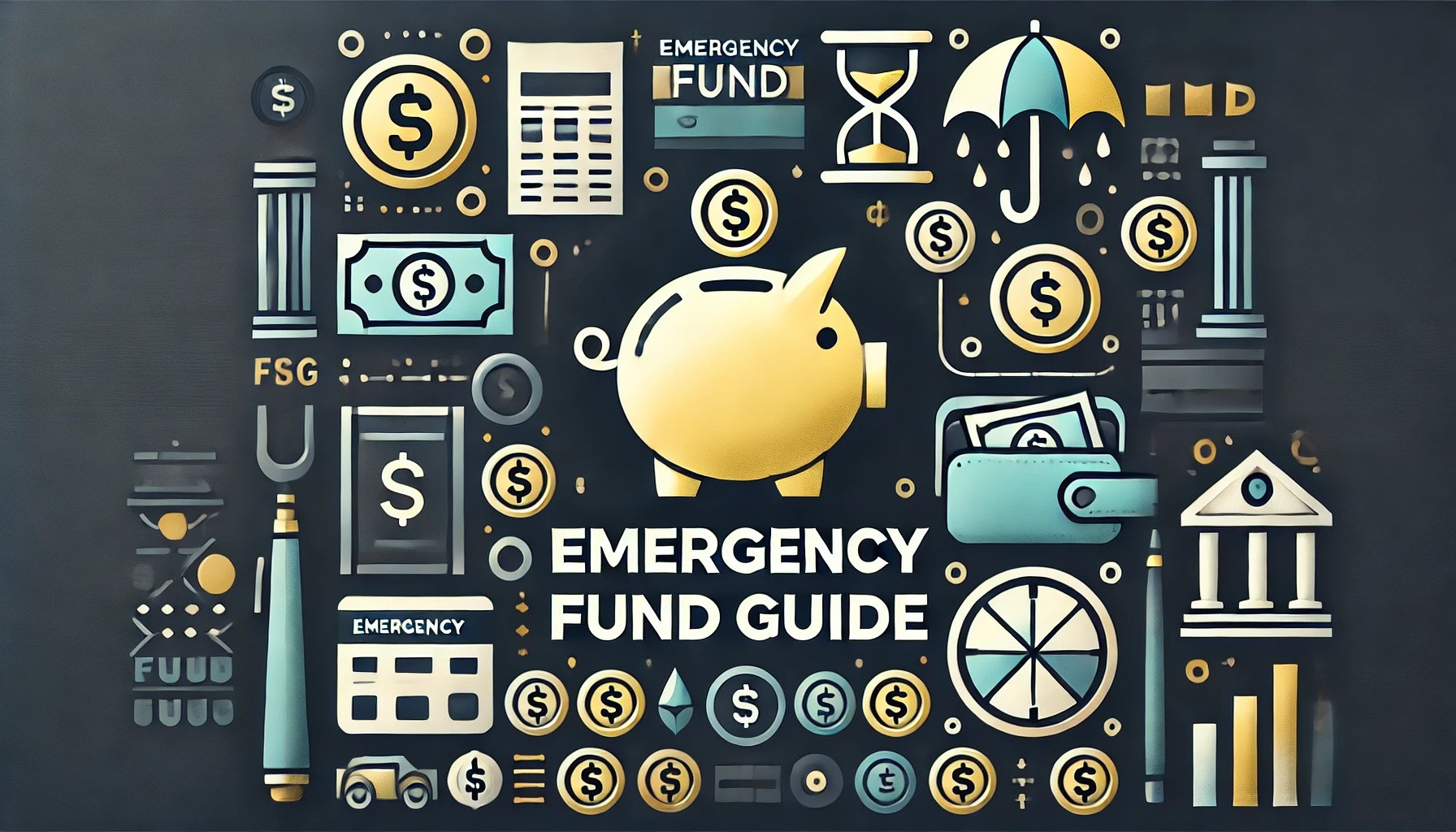Your Ultimate Step-by-Step Guide to Building an Emergency Fund — Even on a Tight Budget
By WB Loo | 2025-03-25
This page may contain some affiliate links. This means that, at no additional cost to you, Alpha Investing Group will earn a commission if you click through and make a purchase. Learn more

Imagine waking up every day with the assurance that you’re ready for any financial surprise, even when funds are scarce.
Even modest, regular savings can gradually build a safety net that guards you against life's unexpected setbacks. Trusted financial advisors and countless personal stories underscore that starting small can lead to meaningful, long-term stability. Recent research and real-world experiences alike reveal that consistent, incremental contributions are the key to overcoming financial challenges. I’m sharing this guide because I know that financial peace of mind isn’t reserved for the wealthy — it’s attainable for everyone willing to take the first step. By breaking down practical, actionable strategies and debunking common savings myths, this guide aims to empower you to take control of your financial future.
Take that essential first step today and transform your limited budget into a robust foundation for lasting security.
With this empowering vision in mind, let’s delve into these practical, step-by-step strategies that transform your limited resources into a robust safety net.
1. Assess Your Financial Situation
Kick off your financial journey by taking a hard look at your entire money picture.
Start by listing all your income sources, fixed obligations, and incidental costs. Knowing exactly where your dollars flow is crucial because it uncovers hidden expenses that might be draining your resources. This comprehensive snapshot serves as the blueprint for smarter spending and targeted saving.
If your budget is tight, understanding every cent you earn and spend transforms financial chaos into a manageable, empowering plan.
2. Set a Clear Savings Goal
Define a precise target for your emergency fund from the very beginning.
Establish an amount equivalent to three to six months' worth of living expenses—a guideline echoed by powerhouse firms like Goldman Sachs. This specific target matters because it transforms an abstract idea of "savings" into a measurable, motivational milestone. With this clear objective, your savings plan becomes a series of achievable steps rather than an overwhelming challenge.
For those living paycheck-to-paycheck, a well-defined goal breaks down the path to financial stability into manageable, confidence-boosting increments.
3. Create a Lean Budget
Design a streamlined budget that prioritizes what truly matters.
Focus on distinguishing between necessary expenses and non-essentials by reviewing each monthly outlay. Understanding where you can trim costs is vital because it reveals extra funds that can bolster your emergency savings. This exercise in frugality results in a leaner spending plan that aligns with your savings objectives.
When every cent counts, a finely tuned budget can be the game-changer that propels you toward lasting stability.
4. Automate Your Savings
Let technology do the heavy lifting by automating your savings.
Arrange for a scheduled transfer from your checking account to a dedicated savings account right after each payday. Automation is key because it removes the daily temptation to spend funds earmarked for emergencies. By setting this process in motion, you ensure your savings grow consistently and effortlessly.
For busy individuals and those juggling tight budgets, this hands-off approach makes building a safety net both simple and sustainable.
5. Cut Unnecessary Expenses
Identify and eliminate spending habits that don’t serve your long-term goals.
Scrutinize recurring costs like subscriptions and dining out, and negotiate or cancel those that aren’t essential. This step is important because every dollar you save from unnecessary expenses can be redirected to strengthen your emergency fund. The result is a more efficient spending plan that frees up vital resources for unexpected needs.
Ultimately, reducing these excesses frees up critical resources that fortify your financial future when every dollar is precious.
6. Boost Your Income Streams
Explore new avenues to supplement your primary earnings and widen your financial base.
Consider side gigs, freelance work, or even monetizing a hobby — methods that have helped many secure extra cash flow according to Forbes. Even small increments in income can dramatically accelerate your savings progress. Diversifying your income not only supplements your budget but also builds a more robust financial foundation.
For those facing the constraints of a limited paycheck, every additional dollar earned serves as a stepping stone to greater freedom and opportunity.
7. Leverage Financial Tools and Resources
Capitalize on modern technology to streamline your money management.
Utilize budgeting apps, savings trackers, and educational platforms to monitor your progress and fine-tune your strategy. This tactic is valuable because it provides immediate insights that help you fine-tune your financial strategy as circumstances change. By embracing these resources, you set yourself up for continuous improvement and smarter decision-making.
Especially when funds are scarce, smart use of technology can turn a daunting financial landscape into a clearly navigable road map.
8. Review and Adjust Regularly
Make it a habit to routinely evaluate and refine your financial strategy.
Conduct monthly or quarterly reviews to assess your progress and tweak your budget as life evolves. This continuous evaluation is critical because it ensures your plan remains flexible and responsive to life’s unpredictable twists. Through regular check-ins, you can celebrate your wins and adjust your course to stay on track.
By staying proactive, you ensure that your emergency fund remains robust, evolving with your unique financial journey even when resources are tight.
Final thought
When resources are scarce, your determination is your greatest asset — build a resilient emergency fund now, because in the face of uncertainty, only unwavering discipline can secure your financial destiny.
